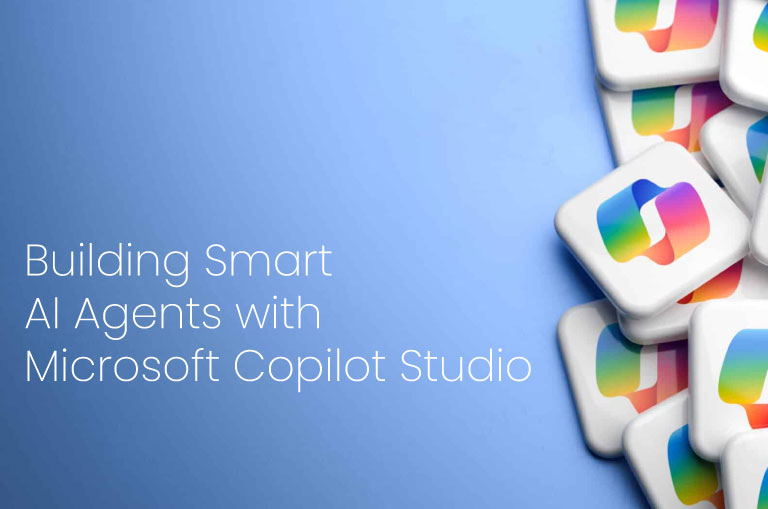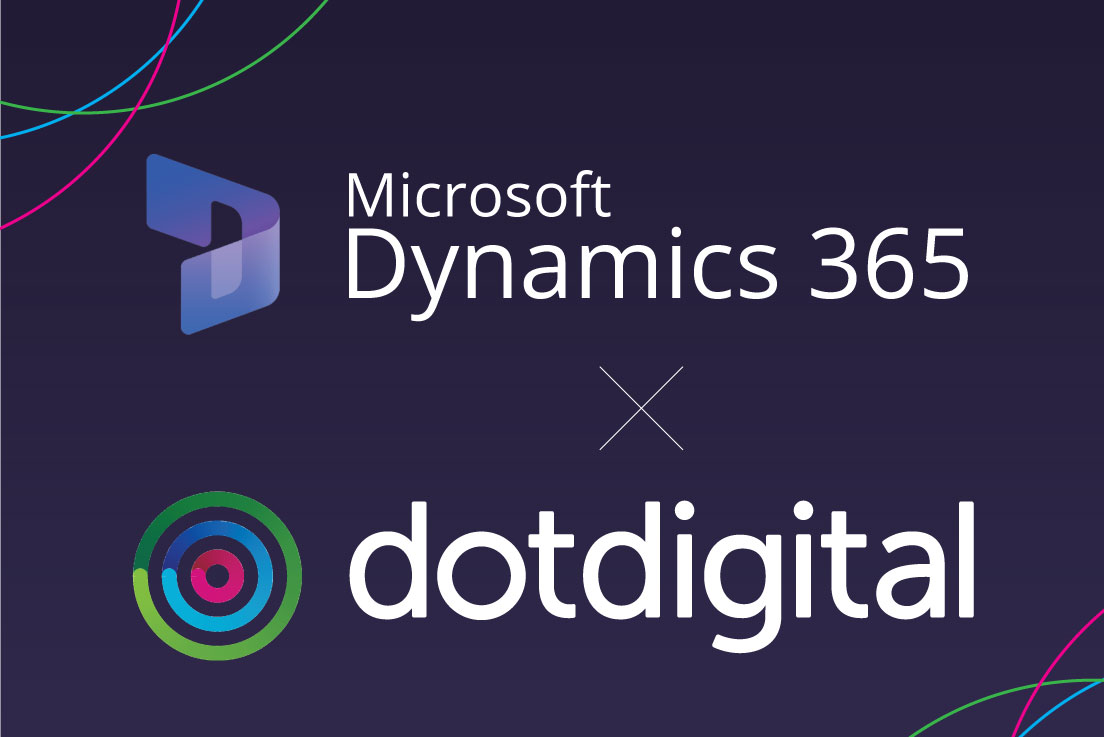Building Smart AI Agents with Microsoft Copilot Studio
- 8 min read

Introduction AI agents integrated with tools and data are advanced assistants that not only hold conversations but can also perform specific actions and use external information sources. In practice, such an agent can automatically handle business processes: from document analysis and filling out spreadsheets to performing actions in other systems. You can think of them as AI-powered applications, with the general Copilot (e.g., Microsoft 365 Copilot) serving as their interface. In other words, the Copilot is an interface that connects to multiple agents, each specialised in a specific task or domain.
Such agents can operate in two ways:
-
Human-triggered – they respond to user questions or commands (e.g., in a chat) and reply, retrieve information, or perform a task on demand.
-
Event-triggered – they work autonomously in the background, detecting events (e.g., an incoming email, a new file) and automatically taking actions without direct user interaction.
In both cases, the agent can leverage artificial intelligence mechanisms (mainly language models) to understand commands and plan actions. Thanks to integration with tools (external services, databases, APIs, etc.), it can perform operations in the external world.
Microsoft describes the spectrum of such agents as follows: an agent can “answer user questions by searching or summarising information, perform actions and automate workflows on demand, and even act independently - planning, learning, and making decisions on its own.”
Microsoft Copilot Studio
Overview
Copilot Studio is Microsoft’s platform for building custom conversational agents within the Microsoft 365 ecosystem. It was developed by expanding the Power Virtual Agents tool with generative AI capabilities. It intuitively allows you to build agents through a graphical interface or even by describing their behaviour in natural language (with AI assistance). The platform supports multiple channels - you can deploy an agent in Microsoft Teams, as a chat on a website, in Office apps (Copilot Chat), or even as an independent solution shared outside of Microsoft 365.
When using Copilot Studio, you create what’s called a declarative agent - you configure what it should know and what it can do, and the generative model handles the rest (understanding questions and generating responses).
The key elements when building an agent in Copilot Studio are:
Knowledge Sources
You can connect dedicated information sources to the agent, such as company SharePoint sites, PDF/DOCX files, knowledge bases, and Microsoft Graph connectors. This gives the agent specific contextual knowledge for your organisation - for example, product documentation, company policies, or HR department FAQs. When a user asks a question, the agent can search these sources and include the information in its response. Importantly, in Copilot Studio, you can also enable the option to use general AI knowledge – then the agent, in addition to your sources, has access to broad world knowledge (similar to ChatGPT). This can be controlled; if you want the agent to rely only on official company data, you can disable the general knowledge option. If you want the agent to handle side questions too, you can leave it enabled.
Actions
These are equivalent to tools - tasks that the agent can perform. In Copilot Studio, actions can include, for example: sending a message in Teams or an email, creating a SharePoint list item, saving to Excel, triggering a Power Automate process, querying a SQL database, or integrating with a third-party application. The wide catalogue of connectors (over 1,000) available through the Power Platform means the agent can reach almost anywhere.
Previously, in Power Virtual Agents, agents were built by manually creating conversation flows and linking actions via Power Automate. In the new Copilot Studio, many of these elements can now be generated automatically. There is also a generative orchestration mechanism, which means the agent (the model) dynamically decides which action or knowledge source to use to respond to a query. This is a huge improvement - instead of manually building dozens of rules like “if the user asks about X, trigger action Y,” you can trust the model to recognise the intent and choose the appropriate tool.
For example: when a user asks, “Show me the sales presentation for client ABC,” the agent can decide on its own to use knowledge sources (searching SharePoint and finding the right file) and then use an action (e.g., send back a link or generate a summary of that file). On the other hand, for a command like “Create a new service ticket,” the agent will recognise that it should use a connector to the Helpdesk system (an action to create the ticket) instead of searching the knowledge base.
Creating and testing dialogue
Copilot Studio allows agent creators to interactively build topics and sample dialogues. You can use the generative feature – for example, describe a conversation scenario in one sentence, and the tool will automatically generate an initial draft of the dialogue (question/answer nodes, branches). You can then adjust this manually. Despite the introduction of generative orchestration, you still have control - you can manually define certain specific topics (important dialogue paths), such as enforcing a user verification procedure before providing sensitive information. You can test the agent in real time in the chat window (Copilot Studio offers a test mode) to check how it responds to various questions and whether it uses the correct sources/actions.
Deployment and sharing
You publish the finished agent to selected channels. In the context of Microsoft 365, the most attractive option is to deploy it to Microsoft 365 Copilot Chat or Teams - this way, end users can talk to it just like with the built-in Copilot, but get answers enhanced with your custom capabilities. Importantly, the agent operates within the organisation - only authorised users have access, and permission levels define which data the agent can access (for example, if a regular employee doesn’t have access to a certain SharePoint, the agent also won’t use it when responding to that employee - security inheritance applies).
Use Case Examples
-
An HR agent that answers questions about leave policies using company regulations.
-
A sales agent that pulls proposals and presentations from SharePoint.
-
A support agent that opens IT tickets and initiates follow-up workflows.
Best practices
Start with purpose and scope: Clearly define what tasks the agent should perform and for whom. Based on this, select the necessary knowledge sources and actions. Resist the urge to give your agent access to everything. A narrower focus makes it easier to test and prevents unwanted surprises.
Use domain knowledge: Load the agent with key documents and knowledge bases containing up-to-date, authoritative information. This ensures the agent’s answers match your company’s reality. For example, for an HR agent, include work regulations, leave request instructions, etc. - so employee questions get correct answers based on those documents instead of random suggestions.
Control style and persona: In Copilot Studio, you can set the tone of the agent’s responses (e.g., professional, friendly) and its persona (e.g., “I’m the HR assistant for company X…”). Define this from the start to keep communication consistent. This is similar to defining a “system message” in other models - it sets the behavioural framework.
Provide proper actions: If you expect users to want the agent to perform specific tasks (like database entries, sending forms, running a process), prepare these integrations in advance. In Copilot Studio, add the relevant Plugins/Actions and ensure the agent is aware of them. It’s a good idea to test them separately - e.g., check if the action performs correctly with sample data. In test mode, verify if the agent suggests using the action when the question matches the intended scenario.
Test various scenarios: After building the agent, run multiple conversation simulations. Ask questions you know the answers to (to verify it uses the provided sources) and unusual commands. Watch for whether the agent “hallucinates” answers beyond its knowledge or performs unwanted actions. Copilot Studio has a trace feature to see where the agent pulls its answer from (knowledge base or action) - use this for validation. Remember that generative orchestration gives the model significant autonomy - make sure the agent stays within the boundaries you expect.
Follow Responsible AI principles: In a corporate environment, it’s crucial for the agent to follow security, privacy, and ethical standards. Microsoft emphasises that Copilot Studio is designed in line with their Responsible AI guidelines (fairness, reliability & safety, privacy & security, inclusiveness, transparency, accountability). In practice, this means filtering sensitive content, avoiding disclosing confidential data to unauthorised people, and clearly communicating the agent’s limits. Ensure your agent doesn’t share information a user shouldn’t access and, if uncertain, routes the user to a human (you can plan escalation to a live agent - e.g., via ticket system integration or chat hand-off, which Power Virtual Agents traditionally supported).
Train and iterate: After deploying the first version, collect user feedback. There may be scenarios where the agent struggles - consider adding another knowledge source or an example dialogue to teach it how to handle that intent. A key advantage of Copilot Studio is the relatively quick ability to update the agent and republish it without coding.
Summary
AI agents, particularly those built with Microsoft Copilot Studio, offer powerful capabilities for automating business processes, improving access to knowledge, and delivering responsive user interactions. By carefully defining their purpose, loading the right data, integrating key actions, and testing thoroughly, organisations can build intelligent assistants that deliver real business value. These agents are here and ready to be embedded into your daily operations.
Want to build your own AI agent? Get in touch with ARP Ideas to discover how we can help you create tailored Copilot-based solutions that transform how your teams work. Our experts will support you every step of the way, from strategy to deploym.

Author: Dobrosław Przebieracz
Business Lead / MS Power Platform Architect Expert
Combines business and system analysis with designing solutions tailored to each client’s needs. Has led numerous projects involving Dynamics 365 CRM, SharePoint, and custom-built applications. Passionate about new technologies and AI since 2019 (before it became mainstream). At ARP Ideas, he drives consulting best practices and organizational improvements.

